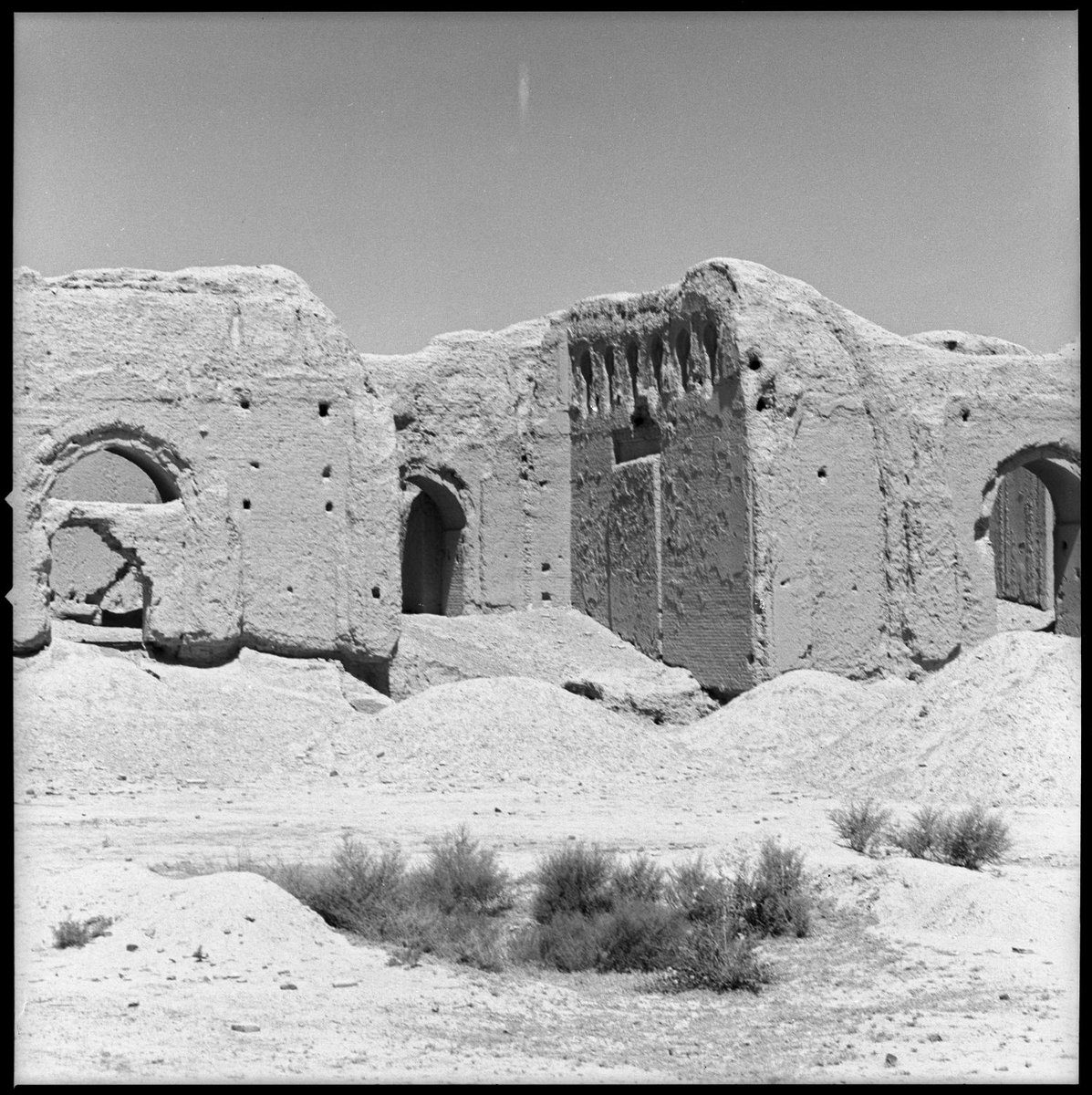The ancient city of #Bust on the east bank of the Helmand river in southern #Afghanistan was settled as early as the seventh century B.C.E. and lived its golden age under the #Ghaznavids, who established it as their winter capital in 977/366 AH.
@atalbrave
@atalbrave
A military campsite, located six kilometers north of the capital on the eastern bank of the #Helmand River, became their site of choice for palaces and grew by the mid-eleventh century into a walled royal suburb.
Its Arabic name, Lashkari Bazar, joins the word for military "Al-'Askar" with "Bazaar," referring to the long market street leading to the southern gate of the suburb. (The #Persian equivalent is "Lashkargah, or Soldier's Place.) Lashkari Bazar was burnt circa 1150-1151/545 AH
during the #Ghurid conquest by 'Ala al-Din Jahansuz (or Husayn II, reg. 1149-1161/544-546 AH) and was restored under the ensuing #Ghurid rule. Bust and Lashkari Bazar were destroyed in a raid by the #Khwarazmshah or #Mongolian army in the early thirteenth century.
The ruins of the Lashkari Bazar extend for 1.4 kilometers along the river (north-south) in an area as wide as 600 meters (east-west) and include hundreds of residential and military structures made of mudbrick.
Among the surviving structures are three large fortified palaces (North, Central and South) built over a cliff overlooking the river. The remains were partially excavated between 1949 and 1951 by the #French Archaeological Delegation (DAFA).
The Northern Palace has a rectangular plan, almost square at ninety (north-south) by one-hundred (east-west) meters. Its fortified walls are buttressed with fifteen semi-circular towers, four of which reinforce the corners. The palace is entered on axis from the south and north.
Inside its walls are three distinct courtyard buildings, separated by gardens or paved courts.
The Central Palace, dating back to #Samanid rule, is thought to be the oldest structure in Lashkari Bazar. Its rectangular plan is oriented with the cardinal axes and measures about fifty-two (north-south) by thirty-five (east-west) meters. Its fortified walls,
which are buttressed with circular corner towers, once rose to a height of about sixteen meters. The palace is organized on two floors divided into quadrants with barrel-vaulted corridors running along the central axes, intersecting at a large central light-well.
The north-south corridors end in porticoes or loggias on both floors, while the shorter east-west corridors are enclosed to form a room and an iwan on the first floor and serve only as loggias on the upper floor. Each of the quadrants has a unique room layout,
with varying access arrangements based on their public or private purpose. Six of the seven eastern rooms on the first floor are entered from the exterior while the western rooms are accessed only through two doorways along the north-south corridor.
The two stairways to the more private second floor are located south of the east-west corridors and are entered only from the exterior.
The Southern Palace is located about two-hundred and fifty meters to the southwest of the Central Palace. Its construction was initiated by Mahmud of #Ghazni (reg. 998-1030/) and completed under his successor, Mas'ud I (reg. 1031-1040). It is the largest palace of Lashkari Bazar,
measuring over one-hundred and sixty-five (north-south) by ninety-five (east-west) meters at its largest. Built as a rectangular courtyard structure, the palace was enlarged during the #Ghurid period to include irregular segments to the west or north,
pushing its walls out to the banks of a bend in the #Helmand River. Built of adobe reinforced with timber on a foundation of baked brick or stone, the crumbling walls of the palace retain segments of carved and painted stucco decoration from the #Ghurid period.
The main, southern elevation of the palace is spanned by two tiers of blind archways, which were once paneled with floral and geometric stucco reliefs and highlighted with inscriptive medallions.
Centered among the archways, the portal retains the beginning and end of a large Kufic band commemorating the Ghurid restoration, including the partially legible date date of 55(?) A.H. (between 1155 and 1163).

 Read on Twitter
Read on Twitter


















